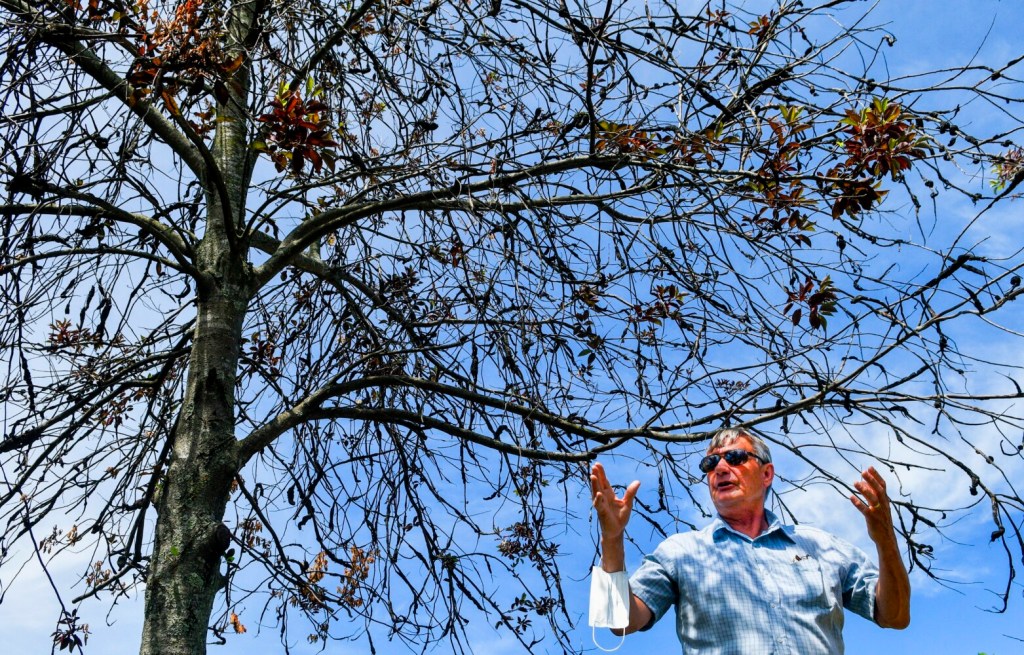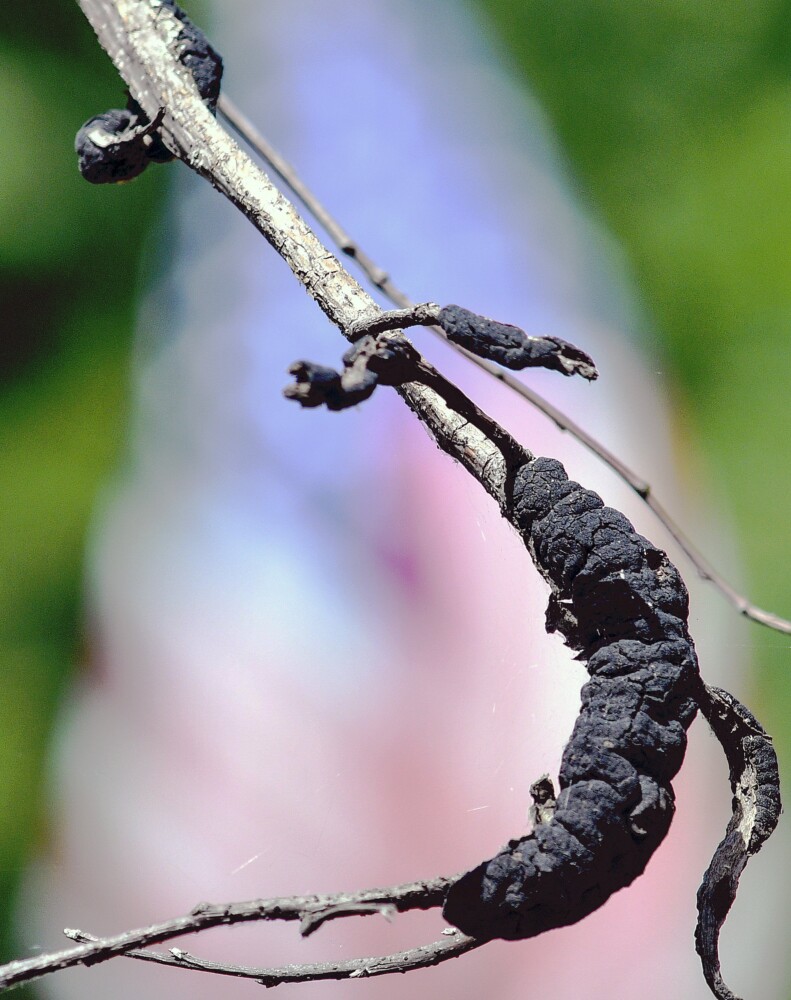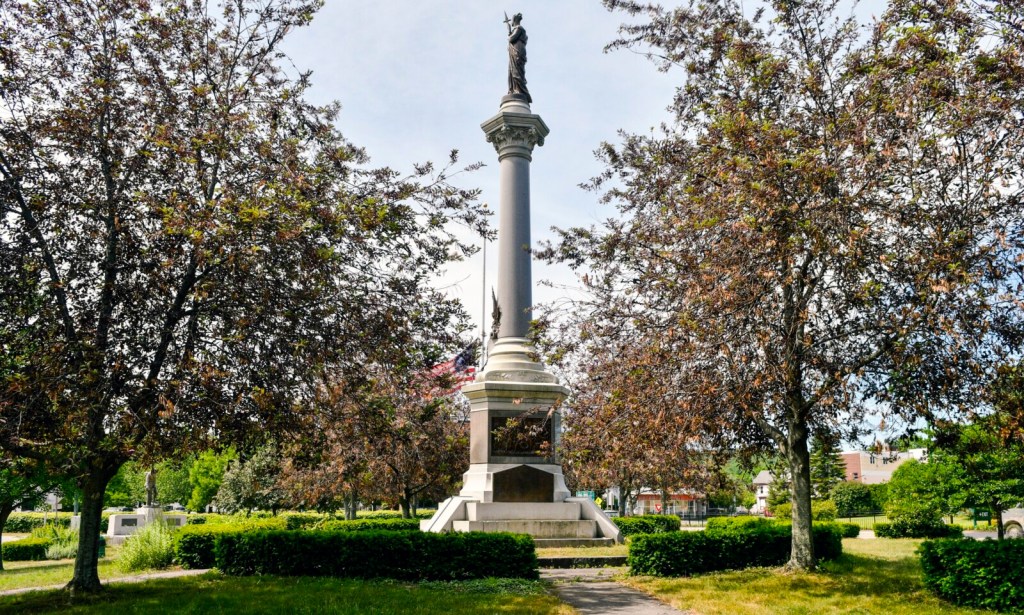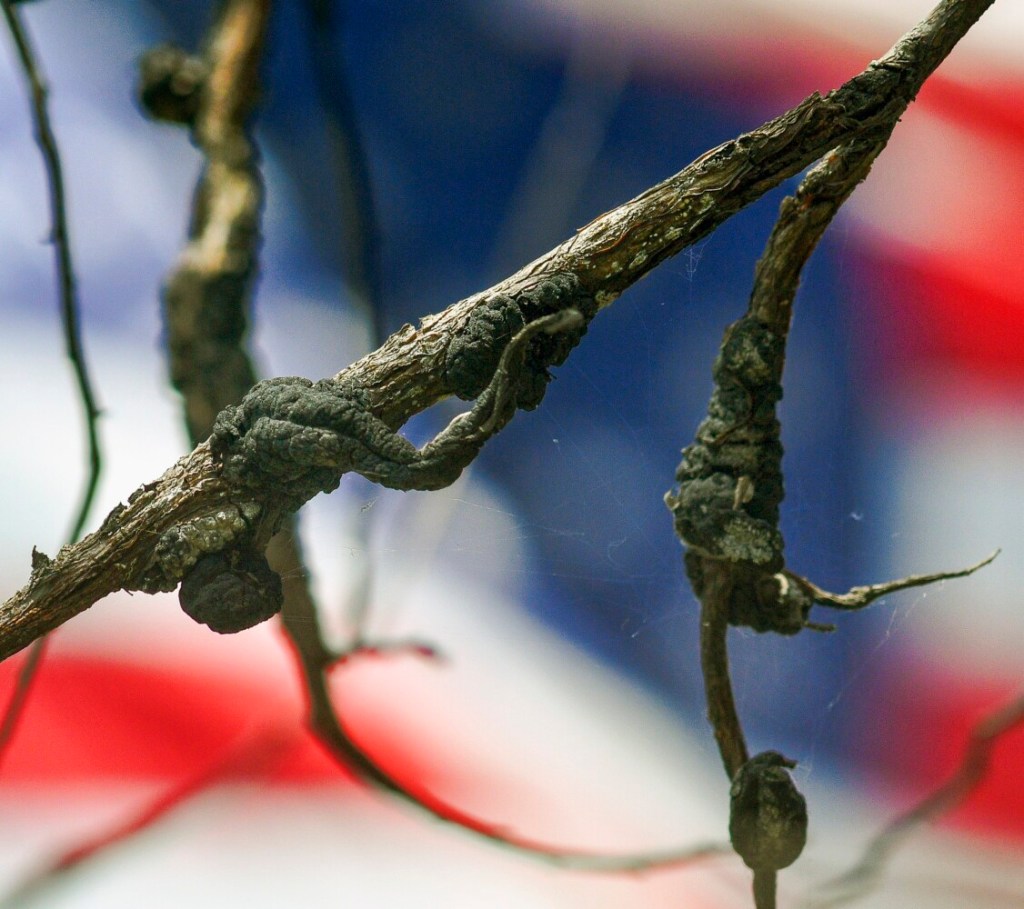AUGUSTA — A nasty fungus has infected numerous cherry trees in the city, including 14 at a city park where officials plan to have them cut down and removed.

The black knot fungus is slowly killing cherry trees at Monument Park, off Memorial Circle, clinging to the trees’ branches and leaving them barren and dying.
Community Services Director Leif Dahlin said the city’s arborist, Rich Wurpel, has spent hundreds of hours over the past several years trying to battle back against the fungus, but it keeps coming back. This year, it has spread to the point trees will be cut down before they die on their own — an effort to prevent further spread of the fungus.
“You can see where he’s clipped and clipped and clipped,” Dahlin said of Wurpel, noting he wipes his pruning clippers off between each cut to prevent spreading the fungus. “But this year it exploded and, tragically, those trees are done. They’re done. It’s time for them to go.”
The fungus is also affecting cherry trees in Mill Park, Calumet Park and other places, which will also be cut down. Experts say the fungus can also harm plum trees.
Dahlin briefed the Augusta City Council on the situation last week because people are sure to see trees being cut down at Monument Park, adjacent to Memorial Circle, according to City Manager William Bridgeo.
“I wanted to make you aware of it, make the public aware of it, because I think it’s going to be pretty dramatic on the day those trees go down,” Bridgeo said. “And folks ought to have some forewarning this has to happen.”
Officials said the city has no choice but to cut down the trees.
“If we don’t do anything, we’ll have a graveyard of dead cherry trees here,” Dahlin said. “They need to come out.”

Black knot is one of the most common diseases affecting cherry and plum trees in Maine, according to officials of the University of Maine Extension’s Plant Disease Diagnostic Laboratory. It is typically spread in the spring, when the fungus produces spores that are ejected during rainy periods, spread to other trees and germinate.
The disease appears, according to the UMaine Extension Plant Disease Diagnostic Laboratory, as obvious hard, black, elongated swellings between 1 and 6 inches long. Their numbers increase in successive years if the disease is left untreated.
It first shows up as inconspicuous swelling into knots, then the bark often splits and the knots turn hard and black by the end of the second year of infection.
Aaron Bergdahl, a forest pathologist for the Maine Forest Service, said the disease can spread rapidly if not caught early. He said its presence in Maine has been consistent, noting the state does not have a lot of cherry or plum trees.

Black knot fungus on a cherry tree branch Thursday at Memorial Circle in Augusta. Joe Phelan/Kennebec Journal Buy this Photo
“It’s not going to hop over to your apple tree or pear tree. There’s no other disease quite like it. It’s unique to cherries and plums,” Bergdahl said. “It’s pretty hard to prune out. And once you prune all these out, you end up with a pretty miserable looking tree. That’s part of the problem.”
At-Large City Councilor Raegan LaRochelle said she was contacted by a resident on the west side of the Kennebec River who was concerned she might have had black knot fungus in her plum tree, and she asked what she should do about it.
Bergdahl said people pruning the fungus should cut back infected branches about 10 inches below where the fungus is visible.
Officials recommend sterilizing cutting shears with 70% rubbing alcohol to avoid spreading the disease, and burning, burying or otherwise removing pruned branches because they could still spread the fungus.
Severely infected trees should be removed, according to the UMaine Extension.
Bergdahl said noticed the ailing trees in Monument Park, and agreed they are badly infected and unlikely to recover.
Dahlin said the city plans to contract with a tree service to have the infected trees cut down and removed. He said the city would look into how the cut trees should be handled to prevent them from spreading the fungus. He said the trees’ stumps will be ground up.
Dahlin said Wurpel is “heartbroken” about what has happened to the cherry and plum trees.
But officials said if there is good coming out of this situation, it is that trees in the park have matured to the point the area could use some thinning. Removing the 14 cherry trees will provide other trees room to grow, and open the view to the war monuments in the park. Dahlin said the city planted the cherry trees in the park about 15 years ago.

A Civil War monument framed by cherry trees infected with black knot fungus Thursday at Monument Park in Augusta. Joe Phelan/Kennebec Journal Buy this Photo
“(The park’s) got those monuments. It’s really something else, and maybe people will be able to see a little more,” Ward 4 Councilor Eric Lind said.
City officials said they will assess the park’s appearance and needs after the infected trees are removed.
“Once we get a look at it and see what it looks like without all those beautiful cherry trees in there,” Bridgeo said. “If it’s necessary, then it’ll be a high priority to get new trees in there.”
Mill Park and other parks in Augusta have also been faced with brown-tail moth nests. The hairs of the caterpillars that emerge from the nests can cause severe rashes and breathing problems for some people.
Dahlin said city workers have removed some nests, but could not remove all of them. Accordingly, signs have been posted in parks warning people about the moths.
Send questions/comments to the editors.







Comments are no longer available on this story